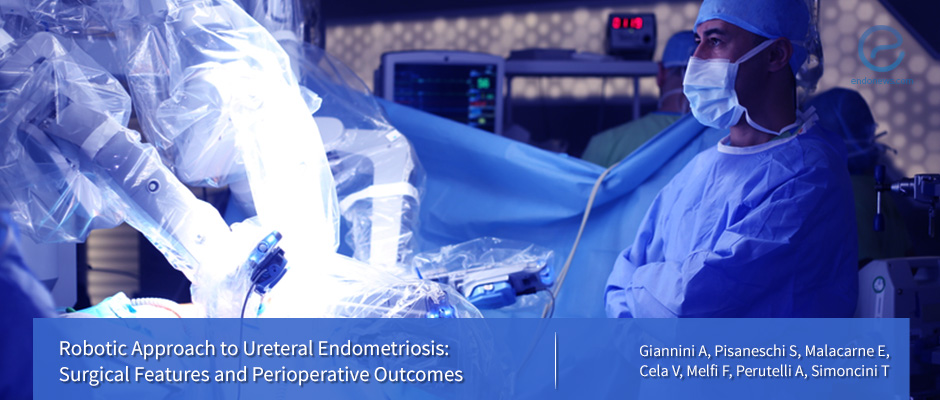New scientific evidence supporting robotic surgical approach to ureteric endometriosis
Jan 29, 2019
Robotic surgical approach to ureteric endometiosis treatment
Key Points
Highlights:
- This study is assessing the feasibility and the perioperative outcomes of minimally invasive treatment of deep ureteral endometriosis using robotic surgery, highlighting the technical benefits of this approach.
Importance:
- Surgery is frequently necessary to treat ureteral endometriosis, with a variety of treatment options based on the size and location of the lesion. However, the method of surgery for ureteral endometriosis is a debated issue due to lack of scientific evidence.
What's done here:
- A retrospective review of 31 consecutive patients who underwent robotic-assisted laparoscopic excision of endometriosis with ureteral involvement in a six-year period.
- All the patients received surgery by gynecologic surgeons trained in advanced mini-invasive techniques with high expertise and skills in robotic approach.
- In 21 cases the endometriotic nodule involved the left ureter while in 10 cases the right ureter was involved and ureterolysis was successfully accomplished in all cases.
- Again in all cases, the resection of the endometriotic nodule surrounding or involving the ureter was considered to be complete, with no residual endometriotic tissue.
- Five patients (16%) reported immediate intraoperative or postoperative complications; four out of five involved the urinary tract. (2 fistulae, one hydronephrosis, one ureterovesical reimplantation, and one vaginal hematoma.
- The results show that robotic surgery for deep infiltrating endometriosis of the ureter was feasible and allowed complete resection of ureteral nodules in all cases.
Lay Summary
Surgical treatment of ureteral endometriosis aims to relieve urinary obstruction besides preserving renal functions. In accomplishing these, the best method of surgical approach is still unclear.
Andrea Giannini and her colleagues from the University of Pisa, Italy conducted a retrospective study reviewing 31 consecutive patients who underwent robotic-assisted laparoscopic excision of endometriosis with ureteral involvement in a six-year period and published the results in Frontiers in Surgery.
Surgery was performed using da Vinci Si and Xi robotic systems by expert gynecologic surgeons trained in advanced mini-invasive techniques with high expertise and skills in robotic approach.
Ureterolysis was successfully accomplished in all cases where the endometriotic nodule involved the left ureter in 21 and the right ureter in 10. The resection of the endometriotic nodules surrounding or involving the ureter was considered to be complete, with no residual endometriotic tissue remaining.
Immediate intraoperative or postoperative complications occurred in 5 patients (16%), 4 of them involved the urinary tract. These were ureteral injury and ureteral fistula(2 patients, 6.4%), one requiring intraoperative stenting and robotic ureterovesical reimplantation, and the second requiring a second operation; one (3.2%) hydronephrosis, and one (3.2%) ureterovesical re-implantation.
"Whether robotic assistance may improve the outcomes of patients with ureteral DIE remains to be explored. Nevertheless, our results show that robotic surgery is effective in terms of the radicality of excision of endometriotic nodules involving the ureters, with non-negligible rates of postoperative urinary tract complications.", concluded the authors.
Research Source: https://www.ncbi.nlm.nih.gov/pubmed/30234125
robotic surgery ureteric endometriosis da Vinci robotic systems

